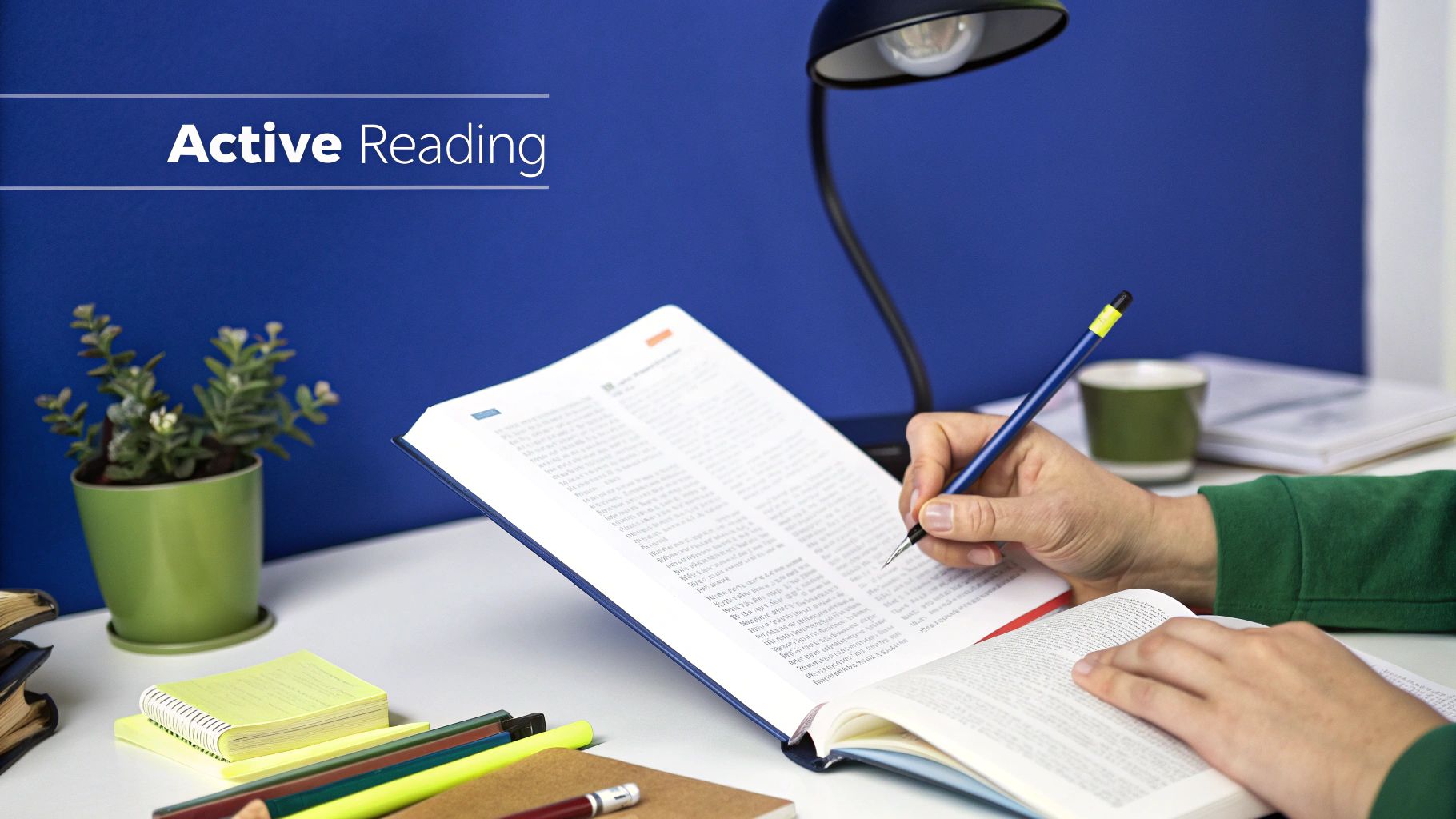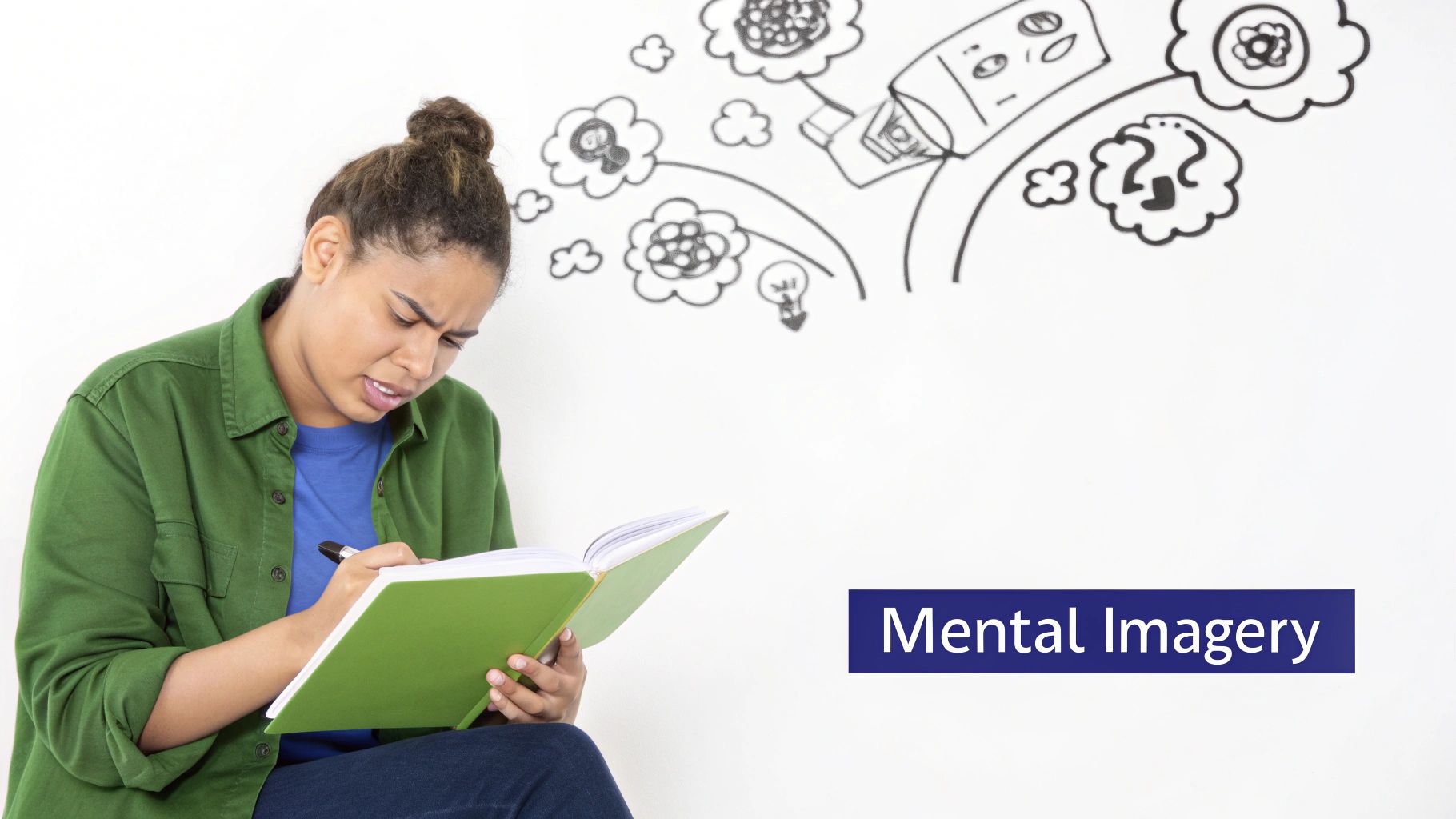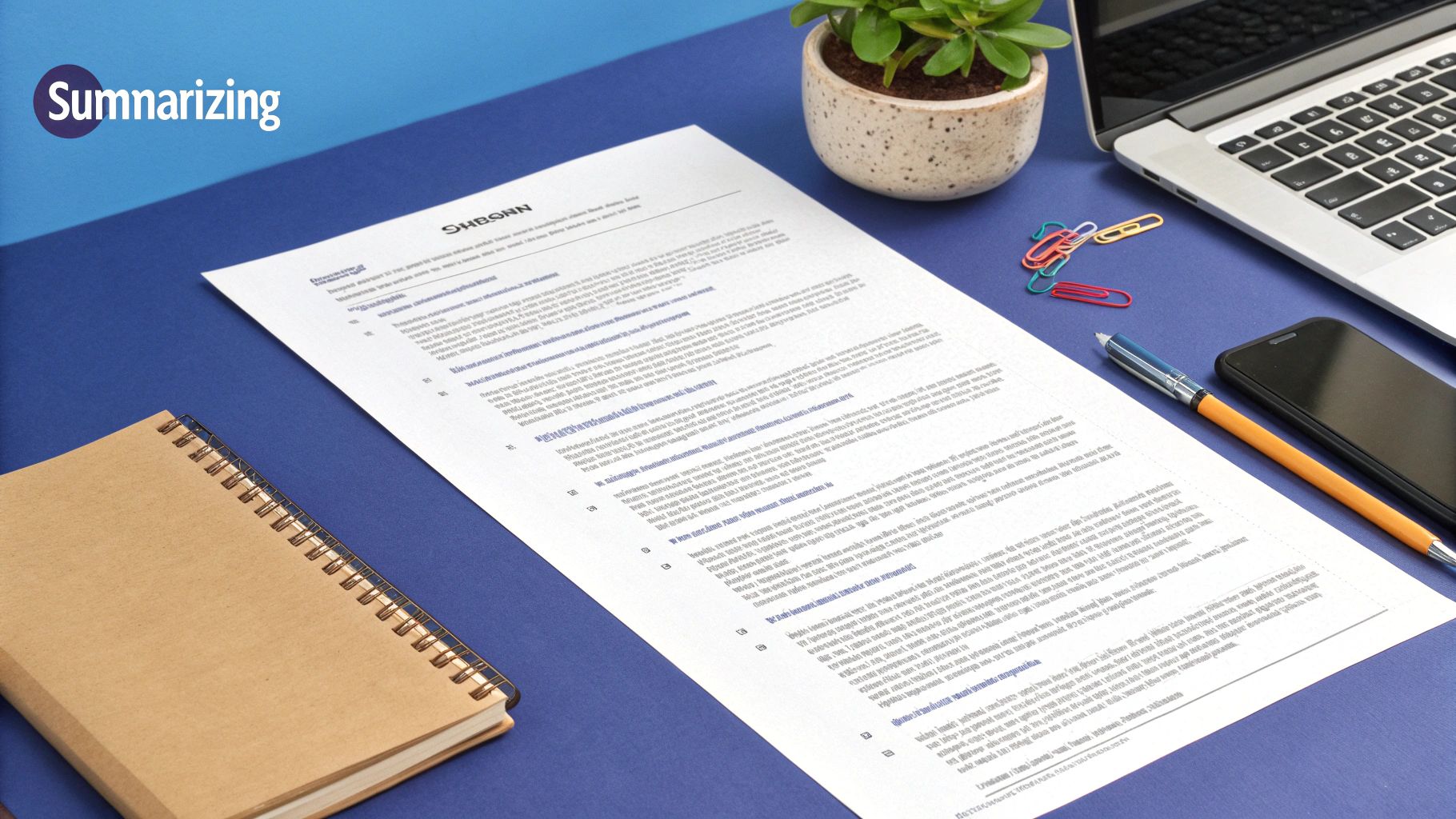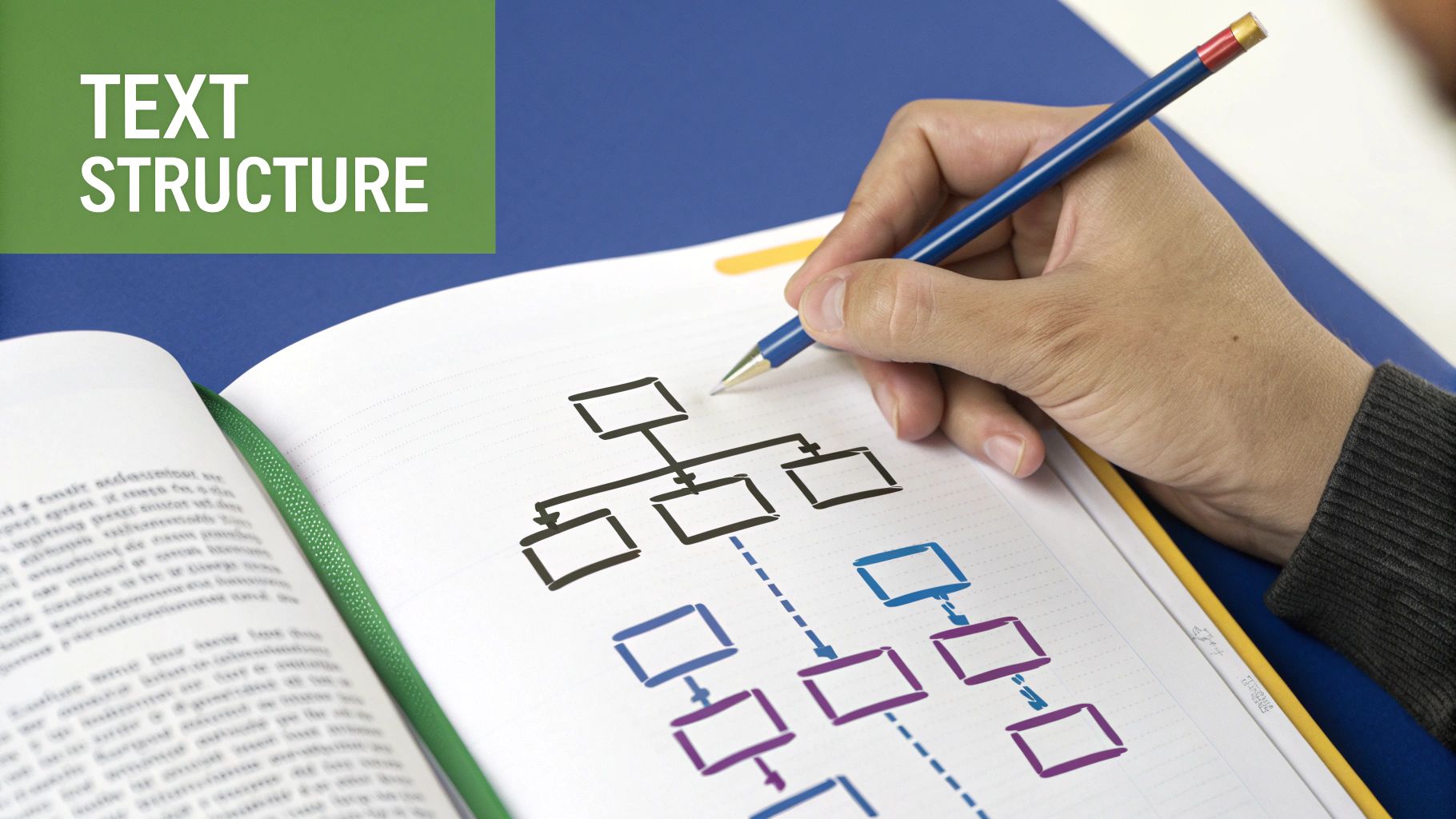- admin@nrichlearning.com.au
Visitors: 40803
Visitors: 40803
In an information-saturated world, the ability to read is a given, but the skill to truly comprehend is a superpower. It marks the difference between passively scanning words and actively constructing meaning, turning static text into dynamic knowledge. Many students and lifelong learners struggle not because of a lack of effort, but from a lack of effective techniques. This article moves beyond the basics to provide a comprehensive roundup of nine powerful reading comprehension strategies.
We will explore each method in detail, offering practical examples and actionable steps you can implement immediately. You will learn to do more than just read; you will learn how to interact with a text. This guide is designed to equip you with the tools to analyse, synthesise, and retain information far more effectively, no matter the subject.
Whether you’re a student aiming for academic excellence, a professional needing to digest complex reports, or simply someone who wants to get more out of their reading, mastering these skills is crucial. For high school students, building these foundational skills is paramount, and personalised support can provide the guided practice needed to turn these strategies into lifelong habits. This list provides the clear, actionable framework to begin that journey.
Active reading transforms reading from a passive consumption of words into a dynamic, interactive process. Instead of simply letting your eyes scan the page, this method requires you to consciously engage with the material. By questioning the author’s intent, summarising key points, and making personal connections to the content, you are essentially having a conversation with the text. This is one of the most fundamental reading comprehension strategies because it forces your brain to process information on a deeper level, significantly boosting understanding and long-term recall.
When you actively read, you are tailoring the learning experience to your own thought processes, a core principle of personalised learning. Explore the benefits of this approach further to enhance your study habits.

Visualization transforms abstract words on a page into concrete mental movies, a powerful technique for boosting comprehension. This strategy involves actively creating detailed pictures in your mind of the characters, settings, processes, or concepts you are reading about. By translating text into images, you engage a different part of your brain, forging a stronger, more memorable connection to the material. This is one of the most effective reading comprehension strategies because it helps you process complex information, make inferences, and remember details that might otherwise be forgotten.

Allan Paivio’s Dual Coding Theory suggests that the brain processes information through both verbal and visual channels. When you use both, your ability to recall information skyrockets. It’s a method seen in diverse educational settings, from story mapping in primary school reading programs to mind mapping techniques. Even the use of graphic novels in literacy programs leverages this principle, proving that a visual approach can make complex narratives more accessible.
Making inferences is the art of reading between the lines, where you act as a literary detective to uncover meanings that are not explicitly stated. This skill requires you to combine clues from the text with your own background knowledge to draw logical conclusions. When an author implies a character’s feelings or a story’s theme, you use inference to understand the deeper message. Mastering this is one of the more sophisticated reading comprehension strategies, as it moves you from literal understanding to interpretative analysis, enriching your engagement with any complex material.

The importance of this skill is highlighted by educators, which emphasises the transaction between reader and text. For instance, when analysing a historical document, you infer the author’s bias based on their word choice and the period’s context. Similarly, in a detective novel, you piece together seemingly unrelated clues to deduce the culprit’s identity before the official reveal. This process of logical deduction is crucial not just in literature, but also in forming scientific hypotheses from experimental data. Making inferences is a core academic skill that fosters critical thinking.
Summarising is the skill of distilling a text down to its essential core. This process involves identifying the main ideas and most crucial supporting details, then rephrasing them concisely in your own words. By filtering out secondary information and focusing on the author’s primary message, you create a condensed version that captures the essence of the original material. This is one of the most powerful reading comprehension strategies because it forces you to actively process, analyse, and synthesise information, ensuring you have truly grasped the central concepts.

The value of summarising is championed by educational researchers whose research highlights its role in building comprehension. Mastering this skill allows you to quickly evaluate the relevance of a text and create effective study notes for later review.
Adopting questioning strategies moves the reader from a passive recipient of information to an active investigator of the text. This method involves deliberately generating and seeking answers to questions before, during, and after reading. By formulating your own inquiries, you create a purpose-driven reading experience, focusing your attention on finding specific information and making deeper connections. These reading comprehension strategies are powerful because they encourage critical thinking and force you to engage with the material on multiple cognitive levels, transforming a monologue from the author into a rich dialogue.
Similarly, applying questions based on Bloom’s Taxonomy encourages thinking that moves beyond simple recall to analysis, evaluation, and creation. Methods like the ReQuest procedure, where students and teachers take turns asking each other questions, further demonstrate the collaborative power of this technique in educational settings. When you actively question the text, you are building a mental scaffold that supports a more robust and lasting understanding.
Text structure awareness is the ability to recognise how information is organised within a piece of writing. Authors use specific structures like cause and effect, problem and solution, or compare and contrast to convey their message clearly. Understanding these organisational patterns acts as a mental roadmap, helping you anticipate what comes next and how ideas connect. This is one of the most powerful reading comprehension strategies because it provides a framework for processing and categorising information, making complex texts far more manageable and easier to remember.
When you consciously identify the text’s architecture, you can better synthesise the core message and its supporting details, improving overall comprehension and critical analysis.
Monitoring comprehension, often referred to as metacognition or “thinking about thinking,” elevates reading from a passive activity to a self-aware, strategic process. This approach involves consciously tracking your own understanding as you read, identifying precisely when and why comprehension falters, and actively using “fix-up” strategies to get back on track. It is one of the most powerful reading comprehension strategies because it empowers you to take control of your learning process, turning confusion into a cue for action rather than a dead end. This internal feedback loop ensures you are not just seeing words, but truly constructing meaning from them.
In practice, this can look like a student pausing mid-paragraph to think, “Wait, I didn’t understand that last sentence,” and deciding to re-read it. This self-regulation is crucial for tackling complex academic texts and is a key skill assessed in standardised tests. For more on preparing for these, you can explore strategies for exams like ICAS, NAPLAN and preparing for entry into a Selective school/Scholarship program.
Making connections anchors new information within a reader’s existing knowledge, transforming abstract concepts into something tangible and meaningful. This strategy involves deliberately linking the text to your own life (text-to-self), to other texts you’ve encountered (text-to-text), and to your understanding of the world (text-to-world). By weaving these threads together, you create a richer, more complex tapestry of comprehension. This is a powerful addition to your toolkit of reading comprehension strategies because it makes learning a personal endeavour, which significantly boosts engagement and memory retention.
For instance, in a literature circle, students might discuss how the theme of friendship in one novel compares to another they’ve read (text-to-text). When reading historical fiction, a student could connect the events in the book to what they’ve learned in history class about that era (text-to-world). These connections build a web of understanding, making it easier to recall details and grasp complex themes. When you consciously make connections, you are activating your prior knowledge to construct a deeper, more personalised meaning.
Using context clues is a powerful detective-like skill that allows you to deduce the meaning of unfamiliar words without reaching for a dictionary. This approach involves leveraging the surrounding words, sentences, and overall text structure to infer meaning. By paying close attention to how a word is used, you can build your vocabulary organically and maintain reading fluency. This is one of the most practical reading comprehension strategies because it empowers you to tackle complex texts independently, strengthening both your vocabulary and your analytical abilities simultaneously.
When you use context, you are not just memorising a definition; you are learning how a word functions within a meaningful framework, which leads to much deeper and more permanent understanding. You can see how this skill is applied in various academic assessments and learn how to master it.
| Strategy | Implementation Complexity 🔄 | Resource Requirements ⚡ | Expected Outcomes 📊 | Ideal Use Cases 💡 | Key Advantages ⭐ |
|---|---|---|---|---|---|
| Active Reading | Medium 🔄🔄 | Moderate ⚡⚡ | High comprehension & retention 📊📊 | Academic study, law, interactive programs | Enhances critical thinking, immediate gap ID ⭐⭐ |
| Visualization and Mental Imagery | Low to Medium 🔄 | Low ⚡ | Improved memory & engagement 📊 | Visual learners, narrative texts, concept learning | Makes abstract concrete, dual coding effect ⭐⭐ |
| Making Inferences | Medium to High 🔄🔄🔄 | Moderate ⚡⚡ | Deeper understanding, analytical skills 📊📊 | Literary analysis, detective stories, research | Develops critical thinking, subtext grasp ⭐⭐⭐ |
| Summarizing | Medium 🔄🔄 | Low to Moderate ⚡ | Better info synthesis & retention 📊 | Report writing, studying, content distillation | Organizes info, improves analytical clarity ⭐⭐ |
| Questioning Strategies | Medium 🔄🔄 | Low to Moderate ⚡ | Enhanced engagement, metacognition 📊 | Classroom discussions, test prep, self-study | Promotes active reading, critical thinking ⭐⭐ |
| Text Structure Awareness | Medium 🔄🔄 | Low to Moderate ⚡ | Improved navigation & prediction 📊 | Complex texts, academic writing, comprehension work | Boosts comprehension & note-taking efficiency ⭐⭐ |
| Monitoring Comprehension (Metacognition) | High 🔄🔄🔄 | Moderate ⚡⚡ | Independent learning & improved performance 📊 | Self-directed study, reading strategy instruction | Prevents mindless reading, promotes self-regulation ⭐⭐ |
| Making Connections | Low to Medium 🔄 | Low ⚡ | Increased relevance & empathy 📊 | Literature discussion, multicultural education | Builds personal meaning, critical thinking ⭐⭐ |
| Context Clues and Vocabulary Strategies | Medium 🔄🔄 | Low to Moderate ⚡ | Enhanced vocabulary & fluency 📊 | Language learning, STEM education, standardized tests | Naturally builds vocabulary, reduces dictionary reliance ⭐⭐ |
Navigating the complexities of a text can often feel like exploring a new city without a map. The reading comprehension strategies we have detailed in this guide act as your personal GPS, transforming you from a passive tourist into an expert navigator of the written word. We have journeyed through nine powerful techniques, each offering a unique lens through which to view and understand information.
From the foundational practice of Active Reading, where you engage directly with the material, to the creative power of Visualisation, which brings words to life, you now have a versatile toolkit. Mastering Inferences allows you to read between the lines, while Summarising helps you crystallise core ideas. These skills work in concert, building a robust framework for deeper understanding.
The true value of these reading comprehension strategies emerges not from knowing them, but from using them. The transition from strategy to skill is paved with consistent, intentional practice. Here is how you can begin this transformative process:
Mastering these concepts is about much more than achieving higher marks on an exam. Strong reading comprehension is a cornerstone of effective learning, critical thinking, and clear communication. It empowers you to analyse reports at work, understand complex global issues, and engage more deeply with subjects you are passionate about. For students, particularly those in Years 11 and 12 facing VCE, these skills are not just advantageous; they are essential for academic success and future-readiness.
Ultimately, these reading comprehension strategies equip you to move beyond simply decoding words on a page. They enable you to construct meaning, challenge ideas, and connect information to your own life. This is the very essence of true learning. The journey from reader to thinker begins with the first question you ask, the first connection you make, and the first summary you write.
If you or your child are looking to turn these powerful strategies into lifelong habits, personalised guidance can make all the difference. The expert tutors at NRICH Learning specialise in developing these exact skills, providing tailored support that builds confidence and delivers results. Explore our programs to see how we can help unlock your full academic potential.
Leave a Reply